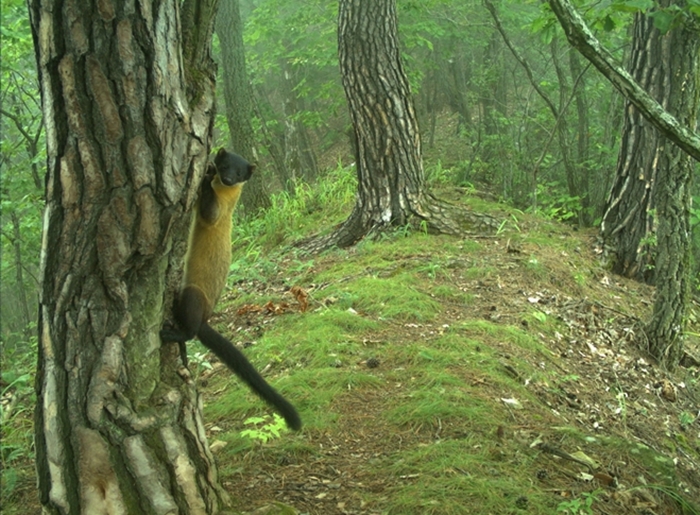
A yellow-throated marten, categorized as an Endangered Wildlife Class II animal, is photographed by a surveillance camera in the Demilitarized Zone. (National Institute Of Ecology)
By Kim Hyelin and Hahm Hee-eun
The Demilitarized Zone (DMZ) is home to 5,929 species of wildlife, including 101 endangered species.
The National Institute of Ecology recently reported that it has confirmed a list of wildlife species by studying three regions within the DMZ, including the eastern coast, the eastern mountainous area, and the western plains. The research spanned three years, starting in 2014, and they analyzed additional data that they had been accumulating since 1974.
According to the report, there are currently 2,954 species of insects, 1,926 species of plants, 417 species of invertebrates, 277 species of birds, 138 species of arachnids, 136 species of freshwater fish, 47 species of mammals and 34 species of amphibians & reptiles living in the DMZ, totaling some 5,929 species of animal and plant life.
As for Class I Endangered Wildlife species, 18 of them were found, including the musk deer and a type of otter. There were 83 species of Endangered Wildlife Class II animals, including the yellow-throated marten and the leopard cat.
These 101 species of endangered animals cover 37.8 percent of the 267 species of endangered animals found all across Korea. "This means that the DMZ is an important habitat for endangered wildlife," explained an officer from the National Institute of Ecology.
Kim Jeong-Kyu, executive director of the National Institute of Ecology, said, "We will continue to build fundamental information sources about the ecosystem so that the DMZ could become a globally important biosphere."
kimhyelin211@korea.kr